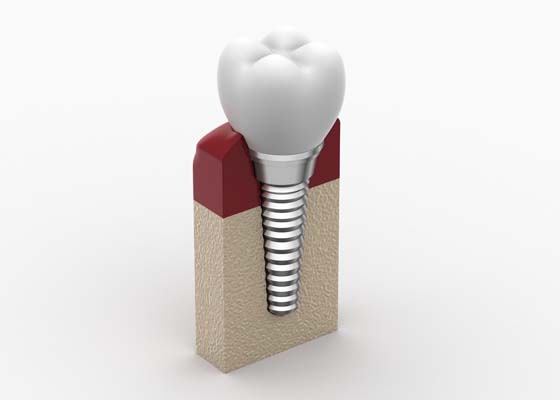Bone Graft Procedure for Dental Implants

Bone grafts for dental implants sound scary when you say it aloud, but what does it mean? Patients need bone grafts to artificially strengthen the tooth insertions on the jawbone so that dentists can make a durable implant location. This article will discuss what a bone graft is and the various details that should be considered before receiving a bone graft.
What is a bone graft?
A bone graft for implants is a procedure where a dental practitioner takes tissue (typically from a more robust structure on the patient’s body, like the chin or any other large bone in the body) and inserts it onto the site of a tooth so that it can reinforce the socket and provide an ideal condition for the procedure of placing an implant.
This procedure is common not only for those wanting implants but also for those patients that need additional reinforcements to their jawbone because of aging and trauma.
How long does a bone graft take to heal?
While the patient will probably feel back to normal in a couple of weeks, a bone graft typically takes anywhere from three to nine weeks to heal fully and properly. There are two kinds of bone tissue in the body. The outer layer is the hard calcified layer that everyone thinks of when they picture a bone in their minds. The second layer is beneath the outer layer and provides repairs and blood supply to the outer calcified layer of bone.
When a bone graft takes place, dentists take from the second layer of bone tissue, the softer underlayer, to augment the site of the potential implant. This layer needs to be allowed the proper amount of time to harden and calcify fully. If the patient were to undergo the procedure of a dental implant without first letting the bone graft fully heal, the patient runs the risk of having an unstable implant or having an unsuccessful procedure.
Will I need a bone graft?
Bone grafts are becoming more and more common– with over 50% of people receiving dental implants in need of a bone graft. This is partly because the types of patients that are typical candidates for bone grafts for implants are aging and experiencing a general level of bone tissue loss. If you are a younger person that is a candidate for a dental implant because of another reason, you may not need a bone graft.
Speak with your dentist
Getting a bone graft can sound scary if you don’t know what it entails, but if you want a successful emplacement of your dental implant, it is imperative that you have the most reinforced spots possible– suitable homes, if you will for your new teeth. It is also important that you talk to your dentist and get the full picture if you have any concerns or reservations about bone grafts for dental implants.
Request an appointment here: https://premierdentalcareutah.com or call Premier Dental Care Of Utah at (801) 316-6577 for an appointment in our West Valley City office.
Check out what others are saying about our dental services on Yelp: Dental Implants in West Valley City, UT.
Related Posts
All-on-4® implants refer to a procedure where the patient gets four posts attached to their jawbone to insert dentures for a simple, quick, and long-lasting smile. They are growing in popularity due to their permanence and effectiveness. There are some things to consider before getting an implant surgery, with one of the most significant components…
Dental bone grafts restore structure and strength to the jawbone. Not only does this enhance the natural appearance of the face, but it can also create a strong foundation for dental implants. There are several types of dental bone grafts that an oral surgeon may recommend. Exploring the various types available can better prepare patients…
Wisdom tooth extraction can induce anxiety in some; however, the procedure is needed in order to prevent issues from developing. In some scenarios, the eruption of the wisdom teeth does not lead to any issues, which means extraction may not necessarily be required. However, most people do experience problems relating to the eruption of their…
Clear braces are becoming more common among patients of all ages. In past years, orthodontists chose traditional metal braces to straighten crooked teeth. However, there are advantages to using clear options instead. If you do not want your orthodontic treatment to hinder your smile, you should not have to worry. Repair your teeth without anyone…
